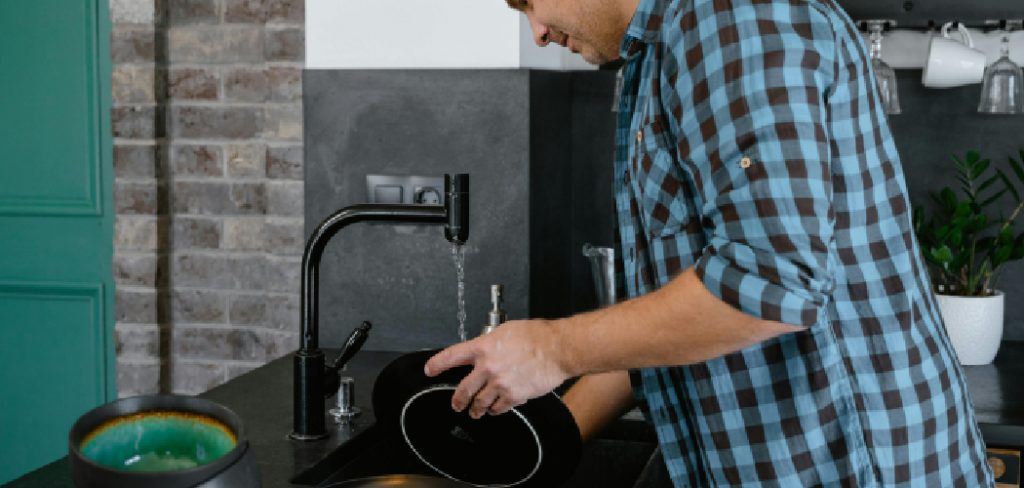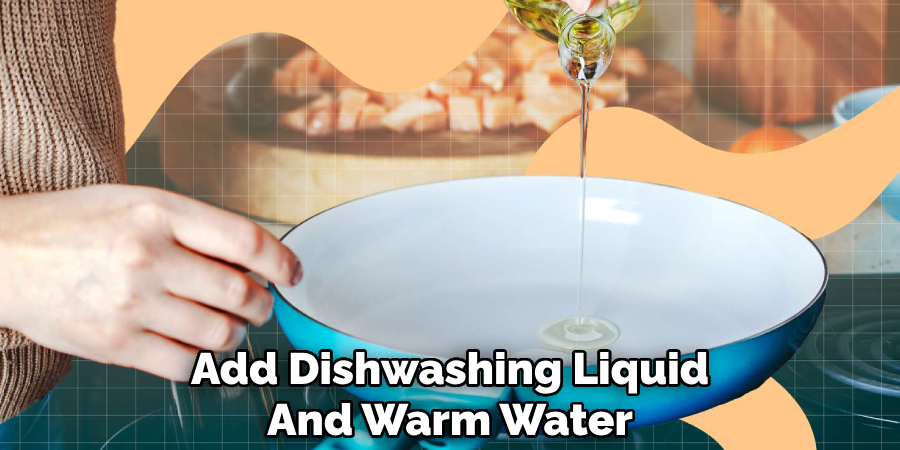Ceramic cookware is a popular choice for home kitchens due to its non-stick surface, even heat distribution, and aesthetically pleasing design. However, to maintain its performance and longevity, proper cleaning techniques are essential. Unlike other types of cookware, ceramic surfaces require gentle care to prevent scratches, stains, and other damage.

This guide on how to clean ceramic cookware will walk you through easy and effective steps to clean your ceramic cookware, ensuring it stays in excellent condition for years to come.
Why is Cleaning Ceramic Cookware Important?
Cleaning ceramic cookware properly is crucial to preserve its functionality, appearance, and longevity. The non-stick surface of ceramic cookware can degrade over time if not maintained correctly, leading to food sticking and uneven cooking. Residual food particles and grease can also build up and cause discoloration or odors, affecting the taste and quality of your meals.
Regular cleaning also helps prevent the growth of bacteria and ensures your cookware remains safe and hygienic to use. By taking the time to clean and care for your ceramic cookware, you can maximize its lifespan and continue to enjoy its benefits for years to come.
Needed Materials
- Non-abrasive Sponge or Cloth
- Mild Dish Soap or Specialized Ceramic Cookware Cleaner
- Hot Water
- Soft-bristled Brush (Optional)
- Baking Soda (Optional)
- White Vinegar (Optional)
9 Simple Steps on How to Clean Ceramic Cookware
Step 1: Let the Cookware Cool Down
Before starting the cleaning process, allow your ceramic cookware to cool completely. Cleaning hot cookware can not only damage its surface but also pose a risk of burns. Waiting until it reaches room temperature ensures the material remains intact and prevents accidental warping or cracking due to sudden temperature changes. Patience at this stage is key to preserving the quality of your cookware.

Sudden changes in temperature, such as placing hot cookware directly under cold water, can cause thermal shock, which may lead to cracks or damage. Patience during this step ensures the longevity and durability of your ceramic pots and pans.
Step 2: Remove Excess Food Residue
After allowing your cookware to cool completely, remove any excess food residue from the surface. Use a soft spatula or a wooden utensil to gently scrape away leftover bits of food without scratching the ceramic coating.
Avoid using sharp metal tools, as these can damage the nonstick surface. Clearing off residue before washing ensures a smoother cleaning process and helps maintain the pristine condition of your cookware.
Step 3: Add Dishwashing Liquid and Warm Water
Fill your sink or a large basin with warm water and add a few drops of mild dishwashing liquid. Submerge your ceramic cookware in the soapy water, ensuring it is fully covered.
The warm water helps loosen any remaining grime or grease, while the dishwashing liquid gently cleans the surface without harming the nonstick coating. Allow the cookware to soak for a few minutes to make cleaning even more effective.
Step 4: Soak Cookware in Sudsy Water
Once the ceramic cookware is submerged in the soapy water, give it some time to soak. This step allows the sudsy water to penetrate stubborn stains and loosen burnt-on residues. Aim to leave the cookware soaking for 15–20 minutes, depending on the level of buildup.
For particularly tough stains, consider extending the soaking time slightly. This process ensures that cleaning requires minimal scrubbing, keeping the surface of your ceramic cookware scratch-free and well-maintained.
Step 5: Scrub Gently with a Soft Sponge or Cloth
After soaking, use a soft sponge or cloth to gently scrub the surface of the ceramic cookware. Avoid using abrasive materials such as steel wool or rough scouring pads, as these can damage the nonstick coating or leave scratches on the surface.

Focus on circular motions to lift any loosened residue, and pay special attention to areas with stubborn stains. The softened buildup from the soaking process should come off easily, leaving your cookware clean and ready for its next use.
Step 6: Rinse Thoroughly
Once all residue has been removed, rinse the ceramic cookware thoroughly under warm running water. Ensure that no soap or cleaning solution remains, as leftover residue can affect the taste of food or interfere with the cookware’s performance.
Use your hands or a soft sponge during rinsing to check for any missed spots and ensure the surface is completely clean. Proper rinsing is essential for maintaining the longevity and functionality of your cookware.
Step 7: Dry Completely
After rinsing, it is crucial to dry your ceramic cookware completely before storing it. Use a soft, clean towel to wipe away any excess moisture. Allow the cookware to air dry for a few minutes to ensure that all hidden moisture, especially around handles or edges, evaporates.
Proper drying helps prevent water spots and protects your cookware from potential damage or rust on any metal components. Making this step a habit will contribute to the longevity and pristine condition of your ceramic cookware.
Step 8: Avoid Extreme Temperatures
Ceramic cookware is designed to handle a range of temperatures, but exposing it to sudden and extreme changes can lead to cracking or warping. Avoid transferring your cookware directly from a hot stovetop or oven to a cold surface, such as a countertop or sink, as this can cause thermal shock.
Similarly, refraining from using high heat settings on the stovetop will help maintain the integrity of the ceramic coating. For best results, allow your cookware to cool gradually before cleaning or storing it. By protecting it from extreme temperature fluctuations, you can keep your ceramic cookware in optimal condition for years to come.

Step 9: Store with Care
To prevent scratching or chipping, store your ceramic cookware carefully. You can either stack smaller items together or place a soft cloth between larger pieces when storing them in a cupboard or pantry.
Following these steps on how to clean ceramic cookware will not only keep it looking like new but also help extend its lifespan. Remember to always read and follow the manufacturer’s instructions for specific cleaning recommendations. Proper care and maintenance can go a long way in ensuring that your ceramic cookware remains a staple in your kitchen for many meals to come.
Safety Precautions when Using Ceramic Cookware
When using any type of cookware, safety should always be a top priority. Here are some tips to keep in mind when cooking with ceramic cookware:
- Always use oven mittens or potholders when handling hot ceramic cookware.
- Avoid placing hot ceramic cookware directly on cold surfaces as this can cause cracking or damage.
- Keep an eye on the temperature of your stove or oven to prevent overheating and potential damage to the cookware.
- Use utensils made of non-abrasive materials such as wood or silicon to avoid scratching the surface of your ceramic cookware.
- Avoid using metal scouring pads or abrasive cleaners when washing your ceramic cookware.
- If your ceramic cookware has a non-stick coating, be careful not to overheat it as this can release harmful fumes into the air.
- Always follow the manufacturer’s instructions for proper use and care of your specific ceramic cookware.
Do You Need to Use Professionals?
While most care and maintenance of ceramic cookware can be managed at home, there may be situations where professional help is beneficial. For example, if your cookware has developed significant cracks, chips, or other damage that impacts its safety or performance, consulting a professional repair service might be necessary.
Additionally, some specialty cookware may require professional cleaning or restoration to maintain its longevity and functionality. However, with proper handling, following care instructions, and regular maintenance, the need for professional services can often be minimized.
Frequently Asked Questions
Q: How Often Should I Clean My Cookware?
A: It is recommended that you clean your cookware after each use to prevent buildup and maintain its quality. However, some materials may require more frequent or specialized cleaning, so be sure to refer to the care instructions for your specific cookware.

Q: Can I Use Soap to Clean My Cookware?
A: Yes, soap can be used to clean most cookware. However, some materials may require gentle or specialized cleaning solutions, so be sure to check the manufacturer’s instructions before using soap.
Q: Is it Safe to Put My Cookware in the Dishwasher?
A: It depends on the material of your cookware. Some materials such as cast iron and copper, should not be placed in the dishwasher as they can rust or degrade over time. Always refer to the care instructions for your specific cookware before putting it in the dishwasher.
Q: How Do I Remove Stubborn Stains or Buildup on my Cookware?
A: For stubborn stains or buildup, a mixture of equal parts water and white vinegar can be used as a natural cleaning solution. Simply soak the affected area for a few minutes before scrubbing with a non-abrasive sponge or brush. Baking soda can also be used as an alternative to vinegar. For particularly tough stains, you may need to repeat this process multiple times.
Conclusion
Proper care and maintenance of your cookware ensure its longevity and optimal performance in the kitchen. By following the recommended cleaning tips and guidelines on how to clean ceramic cookware, you can prevent damage, remove tough stains effectively, and keep your cookware in pristine condition for years to come.
Remember to always check the manufacturer’s instructions and choose the right cleaning methods for your specific cookware. Taking these small steps will make a big difference in maintaining the quality and functionality of your kitchen essentials.
Specialization:
- Master of wheel-throwing, hand-building, and advanced glazing techniques
- Focus on creating both functional pottery and decorative art pieces
Recognition:
- Celebrated by collectors and art enthusiasts for creating one-of-a-kind pieces that blend artistry with functionality
- Participates in local and national exhibitions, earning accolades for his innovative designs and craftsmanship
Passion:
- Deeply committed to exploring and pushing the boundaries of ceramic artistry
- Continuously experiments with new materials, firing techniques, and artistic concepts to evolve his craft
Personal Philosophy:
- Believes in the transformative power of art, aiming to evoke emotions and connections through his ceramic creations
- Advocates for sustainability in ceramics, using eco-friendly materials and practices whenever possible


